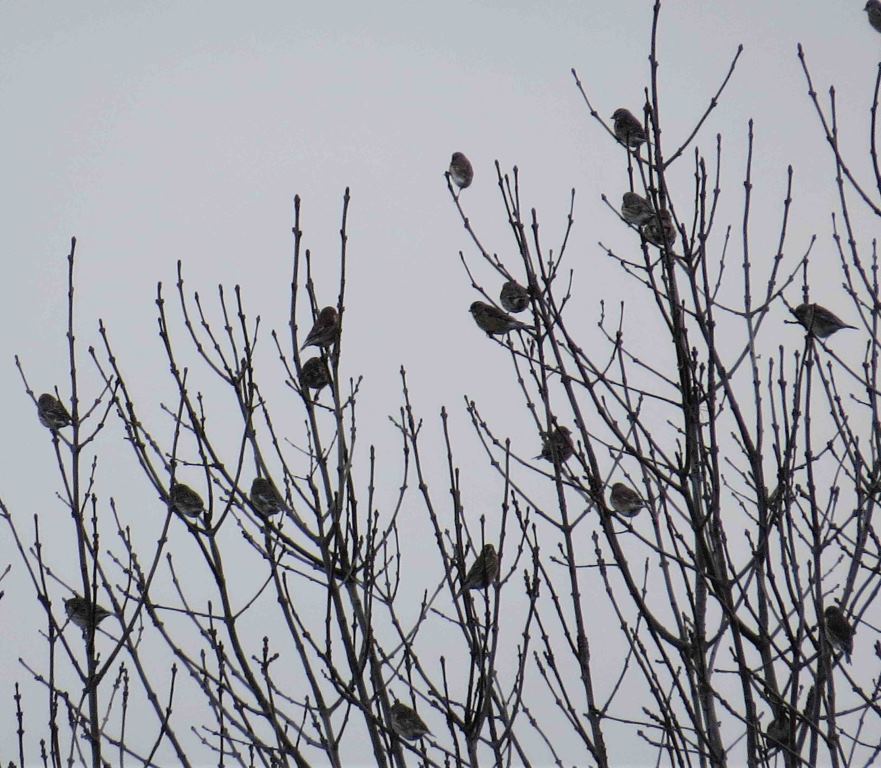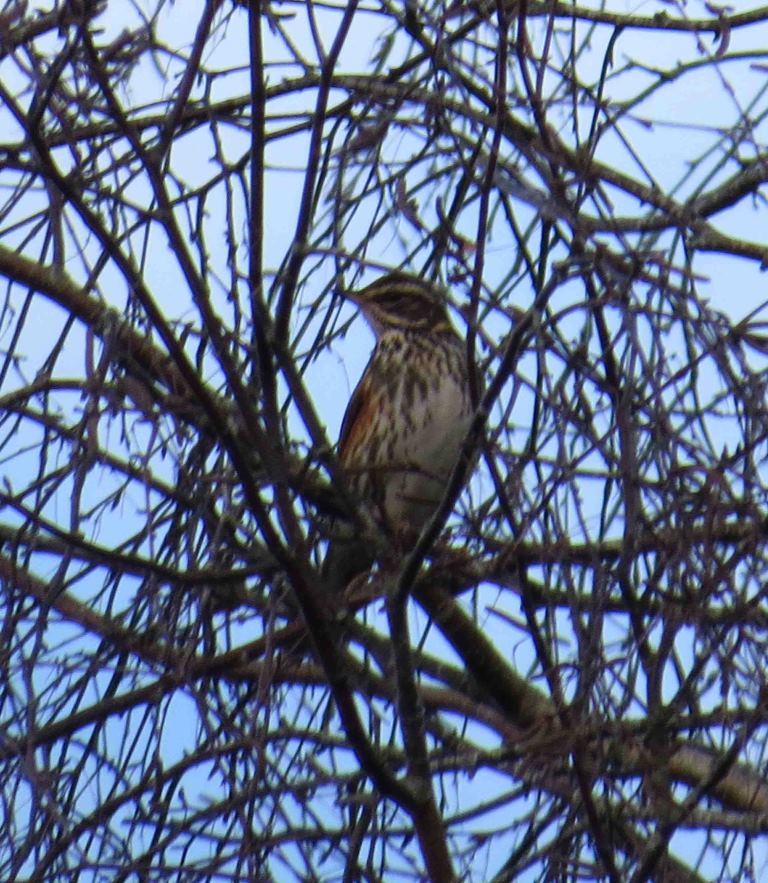Ken and Sarah White kindly led three walks, one on Friday 4 December and two more on Saturday 5 December, all starting from the Rowbarge Inn at Woolhampton. While the groups were assembling in the car park, a Great Spotted Woodpecker called loudly and flew between trees. To help comply with Covid19 regulations and gain the benefit of an early start, two groups of 5 members on the Saturday morning set off in opposite directions; despite this both groups experienced much the same suite of birds. One walk started by crossing the road and following a short stretch of track north-eastwards to the bank of the River Kennet in an anticlockwise direction, before turning back westwards along the tow-path; the other set off to the south going clockwise. Mixed flocks of small birds included Great Tits, Blue Tits and Long-tailed Tits; the thick hedgerow here had a noisy group of House Sparrows, and the bird feeders in the garden of the large house were probably attracting them all. Several large flocks of Wood Pigeons flew high overhead and Redwings were both heard and seen. Soon after re-crossing the road, the river and the canal split, with the route continuing along the canal. A lush growth of Hart’s-tongue Fern was prominent amongst the varied collection of plants which were growing on the lower gate of Woolhampton Lock. Continuing westwards along the tow-path, sightings included Nuthatch, Buzzard, Sparrowhawk (seen here on all 3 walks) and a number of Red Kites. Song Thrush and Robin were singing nearby. The next track led southwards past a fishing lake which had recently been protected against Otters by a tall wire fence with an overhang at the top. Sarah’s group found a small and distant flock of Tufted Duck on this lake. The track led to the largest of the local gravel pits – Rowney Predator Lake. Unfortunately regular wildfowling here had scared away most of the water birds. Sightings here included a pair of Great Crested Grebes, together with a few Coots and Cormorants. The track immediately alongside the River Kennet offered good views of mixed flocks of tits plus two Treecreepers foraging up a large leaning willow tree. Unseasonal flowers beside the track included Hogweed, Wild Angelica, Herb-Robert, Yarrow and White Dead-nettle. The track led out onto open farmland on restored gravel workings, with a dense growth of Miscanthus for bio-fuel on one side and an array of solar panels on the other. A particular highlight of all 3 walks was finding a pair of Stonechats which were actively chasing insects from the solar panel farm perimeter fence, flying down into the long grass in front of the fence, then back up again; a notable sighting, these birds have moved here from the north or places of higher elevation to find a suitable lowland wintering habitat. A mixed flock of Starlings and Jackdaws, together with a number of Carrion Crows, was flying over the next field, but Rooks were noticeably absent. On the other side of the track, a Pied Wagtail flew up from a field where sheep were feeding on Swedes. Leaves plus seed heads of Cowslips and the bright green leaves of Bush Vetch were found growing in the verge. The route then double-backed for a short distance, before turning eastwards. A small flock of Linnets flew up from a fallow field beside the track. The next field looked as if it had been sown with a wild bird mix. At its far end was a good un-flailed hedge, with berry-laden trees and bushes. It soon became apparent that the hedge and field were alive with small birds, including a big flock of Chaffinches, together with Dunnocks and a few Reed Buntings. Goldfinches were feeding on Teasel heads in the field. Then an enormous flock of Linnets, estimated to contain well over a hundred birds, flew up out of the crop and into the trees. Turning north, the next path led across a grassy field. This is where the Friday group watched a female Peregrine fly fast and low across the field and then onwards over the adjacent gravel pit. The path led back to the lane just south of pub. On one side was a Spindle bush which was heavily laden with bright pink berries. Finally, back at the car park, an obliging Fieldfare and Redwing gave excellent views as they fed on Hawthorn berries at the top of the adjacent hedge. In total 51 species of birds were found, with the special highlights described above.
Report by Jan Haseler, Ken White and Sarah White
Pictures by Fiona Brown





